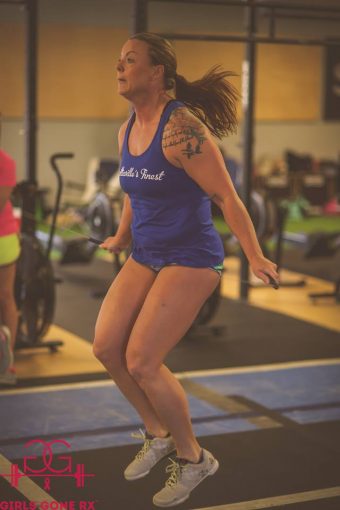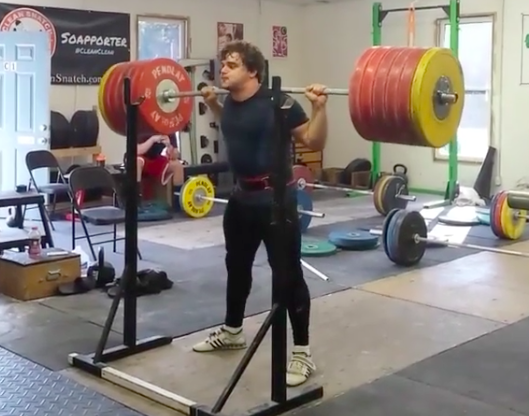Tomorrow our latest e-book “The Mash System” drops! This book is packed with 12-week programs for weightlifting, powerlifting, SuperTotal, Athletic Performance, and Functional Fitness/MashFit. We also have a GPP/Conditioning Section filled with conditioning that will get you in shape without destroying your gains. We also list each method within our system, explain each aspect, and point out where each is found within the programs.
“The Mash System” drops tomorrow. For now you can download our Free E-Book “Mash Method” to get a glimpse of what’s coming. Download “Mash Method” Free at:
==> www.mashelite.com/mashmethod/
CrossFit is Becoming not so Random
If you go to www.crossfit.com, you will find the following written in its definition:
“CrossFit is constantly varied functional movements performed at high intensity.”
Personally I believe when it comes to overall work capacity, this concept is a good idea. It’s basically the conjugate method for exercise. There will always be a place for this concept, but as whole things are changing in the sport.
The biggest problem with this concept is the SAID Principle. The SAID Principle states: “the SAID principle asserts that the human body adapts specifically to imposed demands. In other words, given stressors on the human system, whether biomechanical or neurological, there will be a Specific Adaptation to Imposed Demands”. Basically if you want to get better at something, you have to practice that movement. You can’t get better at throwing a baseball by throwing a football. You have to throw a baseball, and you have to throw it often.
Within CrossFit there are several elements that are combined to make up the sport: gymnastics, weightlifting, powerlifting, general strength modalities, swimming, running, biking, etc. The complexity of weightlifting, gymnastics, and even powerlifting requires more frequency to see improvement. You can’t perform sit-ups and get better at muscle-ups. You can’t perform curls and get better at the snatch.

Most CrossFit competitors are realizing that, and there training protocols are reflecting the SAID Principle more and more. If you want to get better at weightlifting, you will need some specificity. That means you will want to program the Olympic lifts on a more regular basis. The same will go for gymnastic movements. To some degree both weightlifting and gymnastics should be programmed with some for of periodization with a goal of peaking at the Open and then continuing to improve throughout the Games if you are lucky enough to make it.
To some degree the movements of powerlifting should be programmed more frequently especially the squat and deadlift as those two movements will help not only the Olympic lifts, but they will also help with the improvements of running, jumping, biking, and other elements found within the CrossFit protocol. The squat and the deadlift are simply the two most functional and common movement patterns. How many times in a day do you squat down or pick something up. If you improve the quality of movement and/or strength of those two movement patterns, those gains will transfer to countless other areas of fitness and life.
Once again if you want a better squat, you will need to practice it on a regular basis. The same goes for the deadlift. The deadlift doesn’t normally need as high a frequency as the deadlift, but a once per week approach will work perfectly. Squatting improves the quickest for most people when performed with a little more frequency.
However when it comes to programming, it all comes down to what needs improvement. If you are Matt Fraser, CrossFit Games Champion, you won’t have to worry a lot about the Olympic lifts because he was a great weightlifter prior to beginning CrossFit. The same goes for a gymnast starting CrossFit. A gymnast wouldn’t need a lot of work on muscle-ups.
If you want to get better at CrossFit, you will need to master weightlifting and gymnastics. The best way to do that is with frequency. You will want to practice the elements that need the most help on a more frequent basis. I recommend performing the movements that you need the most help on 2-3 times per week, and keep the other elements in the program once per week. It’s really that simple. Sets, reps and total frequency are a little more complicated, but I recommend keeping it as basic as possible.

Am I talking only about CrossFit competitors? No even the general fitness member of your gym will benefit from a little more specificity. People love to get stronger. Anyone that’s ever owned a gym has seen the look on a person’s face after setting a personal record. Not to mention that the strength, hypertrophy, and improved movement patterns that comes with higher frequency weightlifting and gymnastics transfers to a better quality of life, lower body fat percentages, and overall improved health.
One thing that I would recommend is meeting your member at their fitness level. If a person is out of shape and their movement patterns are majorly restricted, I recommend sticking with basic movements like squats, presses and pulls. A 45-year-old accountant doesn’t have to snatch to be fit. If they want to learn how to snatch, you can work towards that with overhead squats and snatch pulls. However I wouldn’t program them a high rep snatch movement in a met con.
The randomness of CrossFit still has a place, and that’s in the conditioning element of the workout. Combinations of runs, carries, high rep lifts, and box jumps are not only healthy, but they are also fun. Fun is something that was almost forgotten about in the gym world before CrossFit came along and revolutionized fitness. If you are a coach, use your creativity in the conditioning portion of the workout. Randomness and constant variance has its place in fitness, and CrossFit should never lose those elements of its core.
Heck you can program the strength movements at a higher frequency and still maintain certain elements of randomness and variance. I use the conjugate method, which is all about varying certain elements of programming to avoid accommodation. However there has to be some specificity and frequency to see measurable gains. I hope this helps to guide you in programming decisions. At the end of the day it’s all about helping people improve, reach their goals, and get healthy.
==============================================
Check out one of the Online Teams:
• Mash Mafia Bronze
• Mash Mafia Silver
• Mash Mafia Gold
• Eat What You Want
• Eat and Lift What You Want
Check them out here: ⇒ Mash Mafia Online Teams
I agree with this. We are currently running a strength cycle on back squat and bench press using APRE(our athletes love this by the way). Our athletes get constantly varied conditioning pieces during the course of the week that hit a variety of energy systems so that we aren’t taxing them in the same energy system every single day.
I love this article and couldn’t agree more. I coach at a crossfit gym and also have my own coaching business which is powerlifting based. I do some weightlifting programming as well.
At my crossfit gym, i offer 3 month strength/powerlifting cycles as an addition to attending normal classes. I also use gymnastics progressions as accessory for these programs and encourage my athletes to work on these movements outside of class. It is necessary to practice what you want to improve!